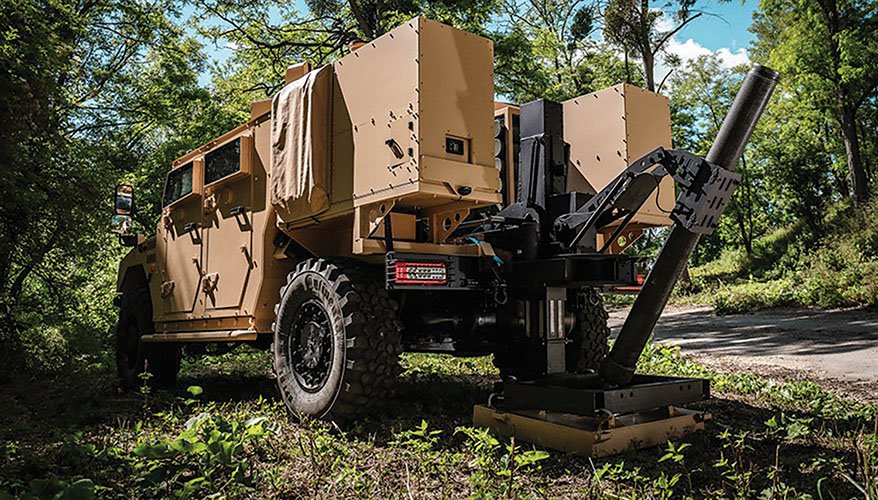Stew Magnuson


LONDON — The DSEI trade show in London has a smorgasbord of panel discussions and keynote speakers spread out in the exhibition halls on six separate stages.
Sometimes it’s hard to choose which one to attend.
But one stood out on day three of the show this year: “Lessons Learned from Ukraine: Does Artillery Win Wars?”
It’s an intriguing question in this day and age, and if the panel had been stocked with think tank types, historians and the like, it would have still been an interesting discussion, but the presence of Lt. Col. Yurii Patskan — officer of the main directorate of rocket forces and field artillery and unmanned systems of the general staff of the armed forces of Ukraine — made it more than an academic question.
For the besieged nation, artillery has become its lifeline, and 155mm rounds are the coin of the realm.
Many agreed, as every seat was taken, leaving a standing room only crowd.
Joining Patskan were artillery officers from France and the United Kingdom, along with the moderator Nick Elliott, U.K. chair of the artificial intelligence company Helsing and a former royal engineer in the British Army.
Joseph Stalin called artillery the “god of war,” Elliott pointed out to the crowd by way of introducing the topic.
“Is that still the case?”
Mass of fires may not be the most important aspect of artillery, he noted.
“The ability to be fast, precise and efficient outweighs sheer numerical superiority. … And that pace is enabled by technology, by software, by new ways of integrating assets and information, by artificial intelligence,” Elliott said.
“No longer is the large eating the small, but it’s the fast eating the slow when it comes to artillery of today,” he added.
Since neither Russia nor Ukraine has achieved air superiority, the war has come down to the two armies slugging it out with artillery, Elliott noted.
The first statistic Patskan shared with the audience backed that up: 90 percent of Ukraine’s fires in the war with Russia have come from artillery.
Another telling stat: at the outset of Russian aggression against Ukraine in 2014, the time from identifying a target to placing an artillery round on it was about 15 minutes. Thanks to spotter drones, counter-battery radars and new command-and-control software, the Ukraine army now has that down to about four or five minutes, Patskan said.
That has meant breaking down the barriers between sensors and shooters, a lesson the British Army is already taking to heart.
Brig. Neil Budd, commander 1st Deep Recce Strike Brigade Combat Team, said, “We’re clearly studying what is happening in Ukraine at the moment.” The Deep Recce Strike Brigade Combat Team was formed in July 2022 to be a unique blend of ground reconnaissance, surveillance, target acquisition and artillery, “all put into one brigade for the first time,” he said.
“There is no longer a boundary between sensor, decider and shooter,” he said.
The goal is to get the system “faster and faster,” which will require more automation and artificial intelligence, he added.
Col. Cyril Iordanow, chief of the artillery office, French land forces command, preferred to quote Napoleon, who said: “God is on the side with the best artillery.”
Nevertheless, he said: “I don’t believe that you win wars with artillery. You win wars with the best strategy, the best military industrial complex and a powerful fighting spirit among the population.”
Yet artillery is important for tactical success: the key for artillery is now command and control, he said, reflecting the view of the other panelists.
Patskan said the two major problems Ukraine is encountering with its artillery are superior Russian electronic warfare capabilities that help it locate Ukrainian units and loitering munitions that destroy them. Thus, the ability to set up artillery quickly, then move to another location, becomes all the more important.
The last Eurosatory trade show in Paris held in June 2022 saw several European arms makers introduce so-called “shoot and scoot” systems — small tactical wheeled vehicles outfitted with mortars that allowed as few as two team members to park, deploy the mortar, load it, fire, then pack up and drive away within a few minutes.
It is growing harder and harder on modern battlefields to hide from the enemy, Budd pointed out, making mobility, agility and disaggregated artillery systems more vital.
Iordanow agreed. “The command post is a choice target,” he added.
Budd added: “If you stay still, you die.”
It doesn’t sound dignified for a “god of war,” but it must now “shoot and scoot.”
The Ukraine war is prompting armies to rethink artillery, he said.
“When you say artillery, your mind instantly goes to a howitzer, because that’s what everyone thinks about. Actually, what we’re talking about is the artillery system. And if we don’t invest in every part of the artillery system going forward from that sensor to decider to shooter, then we’re in effect fighting with one arm behind our back,” he said.
Patskan said one of Ukraine’s immediate needs from industry is acoustic detectors that can identify the location of enemy artillery batteries in areas where Russia has robust electronic warfare systems. It also wants to improve its command-and-control software and needs drones that are more resistant to Russian jamming.
Patskan concluded: “We now see that when we don’t have air superiority, when we don’t have long-range high precision weapons, only artillery can change the situation on the battlefield. And it helps to save the lives of your people and your soldiers.” ND
No comments:
Post a Comment